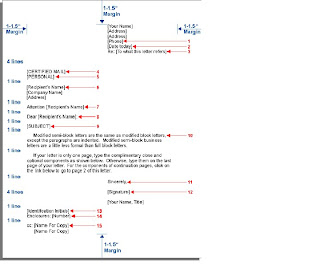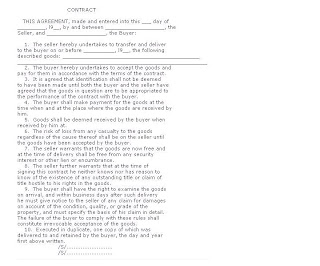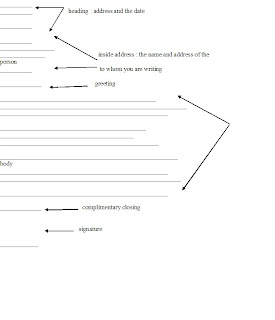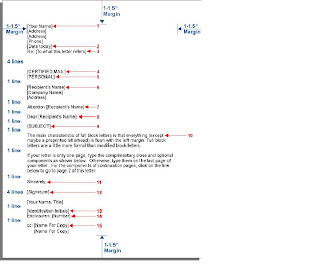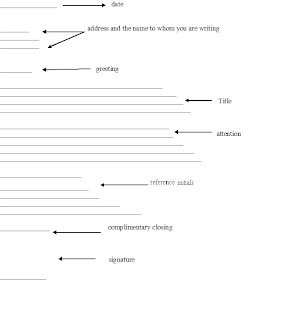The action taken can benefit either the writer or the reader, and sometimes both. That being the case, the scope must include enough information to help the reader determine how best to respond.
In the sample inquiry letter there is a benefit to both the writer and the reader. In it the writer asks for some information and some help. She also provides an incentive encouraging the reader to act.
How to write an inquiry letter:
• Be courteous. Remember, by making this request you are imposing on the reader’s time and/or resources.
• Don’t send an inquiry letter for information you could easily find out by other means, such as with a quick search on the Internet.
• Your letter can be fairly short, but it should be long enough to adequately explain what it is that you are inquiring about and what you want the reader to do in response to your letter.
• Generally, give at least a couple of weeks for the person, company, or organization to respond to your inquiry before you send a follow-up letter or make a follow-up phone call.
• If appropriate, you may want to mention that you will keep confidential any information provided. (This may increase the likelihood that the reader will respond to your inquiry.)
• Make it as easy as possible for the person to respond to your request. This might mean offering to pay for any needed photocopies or mailing costs, or perhaps including a self-addressed, stamped envelope; necessary forms, questionnaires, or other documents; and so forth.
• Make sure to include contact information so that the person can easily get in touch with you if necessary, such as your cell or home phone number or e-mail address.
• When the person responds to your inquiry, it is a good idea to send a quick note of thanks expressing your appreciation and telling how the information helped (or can help) you. If appropriate, you may want to offer to return the favor in the future.
How to respond to an inquiry letter:
• Specifically indicate the inquiry that was made, as you understand it.
• Express your appreciation for the person’s interest.
• If possible, personally respond to the inquiry. You might want to include with your response letter any brochures, catalogs, reports, or other helpful information available.
• If appropriate, clearly describe any action you feel the person should take and the reason(s) for such a recommendation. (However, you may want to use caution because of any possible liability you might incur for offering such advice.)
• If you cannot personally answer the person’s question, let him/her know that you have contacted the person who can and that he/she will shortly be in touch with the reader. If this is not possible, express your regret for being unable to help the reader, and try to find out for him/her the contact information for someone who can help.
• If appropriate, you might want to include additional information about your organization, the products or services you sell, or the subject matter of the inquiry, beyond the scope of the original inquiry.
• Close by saying that you would be happy to help the reader in the future if he/she needs further assistance or by wishing him/her well in his/her endeavor or project, etc.
Inquiry Letter Tips:
• Begin your letter by stating who you are and giving your status or position (such as student, researcher, interested consumer, etc.), and tell how you found out about the individual or entity that you are writing to.
• Clearly state what it is that you are inquiring about and what you would like the recipient of your letter to do. Make your inquiry as specific as possible.
• You might want to briefly explain the purpose of your letter or what you hope to accomplish. Such an explanation may prompt the recipient of your letter to act more quickly.
• If appropriate, consider mentioning the letter recipient’s qualifications for responding to your inquiry (this may prompt him/her to act when he/she might otherwise be hesitant to do so). For example, you could explain that you are writing to the reader because she is a leader in her field and the accepted authority on the subject you are interested in.
• Include the date by which you need the information, services, etc., that you are requesting, and indicate that you await the reader’s response.
• Thank the person for his/her time.
Elements of a Letter of Inquiry
Not unlike a grant proposal, the letter of inquiry should include: an introduction, a description of your organization, a statement of need, your methodology, a brief discussion of other funding sources, and a final summary.
Introduction
The introduction serves as the executive summary for the letter of inquiry and includes the name of your organization, the amount needed or requested, and a description of the project. The qualifications of project staff, a brief description of evaluative methodology, and a timetable are also included here. This should not exceed one paragraph.
Description of Your Organization
The organization description should be concise and focus on the ability of your organization to meet the stated need. Provide a very brief history and description of your current programs while demonstrating a direct connection between what is currently being done and what you wish to accomplish with the requested funding. You will flesh this section out in greater detail if you are invited to submit a full proposal.
Statement of Need
The statement of need is an essential element of the letter of inquiry and must convince the reader that there is an important need that can be met by your project. The statement of need includes: a description of the target population and geographical area; appropriate statistical data in abbreviated form; and several concrete examples.
Methodology
The methodology should be appropriate to your statement of need and present a clear, logical and achievable solution to the stated need. Describe the project briefly, including major activities, names and titles of key project staff, and your desired objectives. As with the organization description, this will be presented in far greater detail in a full proposal.
Other Funding Sources
Other funding sources being approached for support of this project should be listed in a brief sentence or paragraph.
Summary
The final summary restates the intent of the project, affirms your readiness to answer further questions, and thanks the potential funder for its consideration.
Note: attachments should be included only at the direction of the potential funder and should be specific to its application guidelines.
To learn more about proposal writing, take the Foundation Centers online tutorial, Proposal Writing Short Course. The Foundation Center also offers a full-day proposal writing seminar in various locations around the country.
Example the letter of inquiry :


